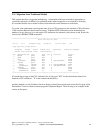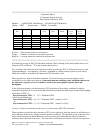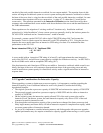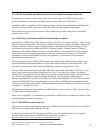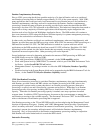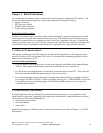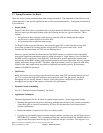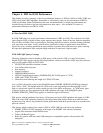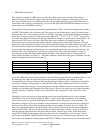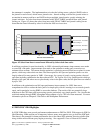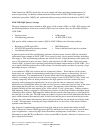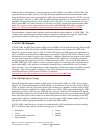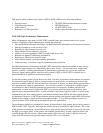
3.3 Tuning Parameters for Batch
There are several system parameters that affect batch performance. The magnitude of the effect for each
of them depends on the specific application and overall system characteristics. Some general information
is provided here.
y Expert Cache
Expert Cache did not have a significant effect on the Commercial Mix batch workload. Expert Cache
does not start to provide improvement unless the following are true for a given workload. These
include:
y the application that is running is disk intensive, and disk I/O's are limiting the throughput.
y the processor is under-utilized, at less than 60%.
y the system must have sufficient main storage.
For Expert Cache to operate effectively, there must be spare CPU, so that when the average disk
access time is reduced by caching in main storage, the CPU can process more work. In the
Commercial Mix benchmark, the CPU was the limiting factor.
However, specific batch environments that are DASD I/O intensive, and process data sequentially
may realize significant performance gains by taking advantage of larger memory sizes available on
the RISC models, particularly at the high-end. Even though in general applications require more
main storage on the RISC models, batch applications that process data sequentially may only require
slightly more main storage on RISC. Therefore, with larger memory sizes in conjunction with using
Expert Cache, these applications may achieve significant performance gains by decreasing the
number of DASD I/O operations.
y Job Priority
Batch jobs can be given a priority value that will affect how much CPU processing time the job will
get. For a system with high CPU utilization and a batch job with a low job priority, the batch
throughput may be severely limited. Likewise, if the batch job has a high priority, the batch
throughput may be high at the expense of interactive job performance.
y Dynamic Priority Scheduling
See 19.2, “Dynamic Priority Scheduling” for details.
y Application Techniques
The batch application can also be tuned for optimized performance. Some suggestions include:
y Breaking the application into pieces and having multiple batch threads (jobs) operate concurrently.
Since batch jobs are typically serialized by I/O, this will decrease the overall required batch
window requirements.
y Reduce the number of opens/closes, I/Os, etc. where possible.
y If you have a considerable amount of main storage available, consider using the Set Object Access
(SETOBJACC) command. This command pre-loads the complete database file, database index, or
program into the assigned main storage pool if sufficient storage is available . The objective is to
IBM i 6.1 Performance Capabilities Reference - January/April/October 2008
© Copyright IBM Corp. 2008 Chapter 3 - Batch Performance 40



